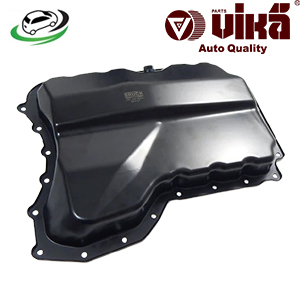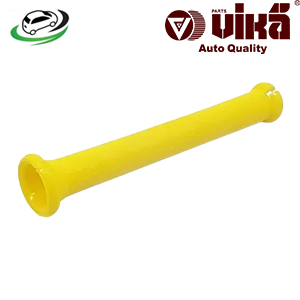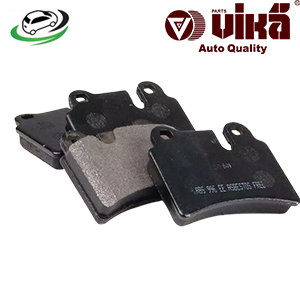-24%
Get Rear Brake Pad Set Volkswagen Touareg 1 V6 7L6698451B
The rear brake pad set is a critical component of a vehicle’s braking system, playing a crucial role in ensuring safety, performance, and overall driving experience. Brake pads are responsible for generating the friction necessary to slow down or stop the vehicle when the brake pedal is applied. This article provides an in-depth exploration of the rear brake pad set, covering its functions, types, construction, maintenance, and signs of wear.
The Function of Rear Brake Pads
The primary function of rear brake pads is to create friction against the brake rotors to slow down or stop the vehicle. When you press the brake pedal, hydraulic pressure from the brake fluid forces the brake calipers to squeeze the brake pads against the spinning rotors. This friction between the pads and rotors generates the stopping power required to decelerate the vehicle. Rear brake pads work in conjunction with the front brake pads, and while the front brakes typically handle a greater portion of the braking force, the rear brakes play an essential role in overall braking performance and stability.
Construction of Rear Brake Pads
Rear brake pads are constructed from several key materials and components:
- Friction Material: The friction material is the component of the brake pad that comes into contact with the brake rotor. It is designed to withstand high temperatures and generate the necessary friction. There are several types of friction materials used in brake pads:
- Organic (Non-Asbestos) Pads: Made from a mixture of materials like glass, rubber, and resins. They are generally quieter and provide a softer braking experience but may wear out faster than other types.
- Semi-Metallic Pads: Contain metal fibers (such as steel or copper) mixed with the friction material. They offer better heat dissipation and durability but can be noisier and produce more brake dust.
- Ceramic Pads: Made from ceramic fibers and other materials. They provide excellent performance, low noise, and minimal dust. They are often used in high-end vehicles for their durability and quiet operation.
- Backing Plate: The backing plate, or steel plate, provides structural support to the friction material. It is attached to the friction material and serves as the base of the brake pad. It is typically made from stamped steel and is designed to withstand the forces exerted during braking.
- Shims: Shims are thin metal or rubber layers attached to the backing plate to reduce noise and vibration. They help to dampen vibrations and prevent squealing during braking.
- Wear Indicators: Some brake pads are equipped with wear indicators, which are metal tabs that produce a squealing noise when the pads are worn down to a certain level. This serves as a warning to the driver that the brake pads need to be replaced.
- Anti-Rattle Clips: Anti-rattle clips are used to keep the brake pads securely in place and reduce noise caused by movement within the caliper.
Importance of Rear Brake Pads
- Safety: Rear brake pads are essential for safe braking. They help distribute braking force evenly between the front and rear axles, contributing to balanced braking and vehicle stability. Worn-out or malfunctioning rear brake pads can lead to decreased braking performance and increased stopping distances, compromising safety.
- Vehicle Control: Properly functioning rear brake pads contribute to better vehicle control, especially during emergency stops or sudden braking. They help prevent the rear wheels from locking up and causing skidding or loss of control.
- Brake Balance: Rear brake pads play a crucial role in maintaining the balance between the front and rear brakes. Proper brake balance ensures that the vehicle stops smoothly and avoids excessive wear on either the front or rear brake components.
- Driving Comfort: High-quality rear brake pads contribute to a smooth and quiet braking experience. They minimize noise, vibration, and harshness, enhancing overall driving comfort.
Signs of Worn Rear Brake Pads
- Squeaking or Squealing Noise: A common indicator of worn brake pads is a high-pitched squeaking or squealing noise when braking. This noise is often caused by a wear indicator that alerts the driver to replace the pads.
- Grinding Noise: If the brake pads are severely worn, they may produce a grinding noise as the metal backing plate comes into contact with the rotor. This noise indicates that the pads need immediate replacement and could signal potential damage to the rotors.
- Reduced Braking Performance: A decrease in braking performance, such as longer stopping distances or a soft brake pedal, can indicate that the rear brake pads are worn or not functioning properly.
- Vibration or Pulsation: If you experience vibrations or pulsations in the brake pedal while braking, it could be a sign of uneven wear on the brake pads or a problem with the rotors.
- Warning Light: Some modern vehicles have a dashboard warning light that illuminates when the brake pads are worn or need servicing. Check the owner’s manual for information about brake pad warning lights.
Maintenance and Care
- Regular Inspection: Regular inspection of the rear brake pads is essential for maintaining brake performance and safety. Inspect the pads for thickness and wear during routine maintenance or tire changes. Most mechanics will check brake pads as part of a standard service.
- Brake Fluid Checks: Ensure that the brake fluid is at the proper level and in good condition. Brake fluid helps transfer hydraulic pressure to the brake calipers and can affect braking performance.
- Avoid Hard Braking: Avoiding sudden or hard braking can help prolong the life of the brake pads. Gradual braking and smooth driving habits can reduce wear on the brake pads and improve overall performance.
- Rotor Maintenance: Keep an eye on the condition of the brake rotors. Worn or damaged rotors can affect the performance of the brake pads and may require resurfacing or replacement.
- Proper Installation: Ensure that the rear brake pads are installed correctly. Proper installation helps prevent issues such as noise, vibration, and uneven wear. Follow the manufacturer’s recommendations and torque specifications for brake pad installation.
Replacing Rear Brake Pads
Replacing rear brake pads is a common maintenance task that can be performed by a professional mechanic or a skilled DIYer. Here’s a general overview of the replacement process:
- Preparation: Ensure the vehicle is parked on a level surface and the parking brake is engaged. Raise the vehicle using a jack and secure it with jack stands.
- Remove the Wheel: Remove the rear wheel to access the brake components.
- Inspect the Brake Components: Check the condition of the brake rotors and other components. If the rotors are worn or damaged, they may need to be resurfaced or replaced.
- Remove the Old Brake Pads: Remove the caliper bolts and slide the caliper off the brake rotor. Carefully remove the old brake pads from the caliper bracket.
- Install New Brake Pads: Install the new brake pads into the caliper bracket. Ensure that the pads are properly aligned and seated.
- Reinstall the Caliper: Reinstall the caliper over the new brake pads and secure it with the caliper bolts. Ensure that the caliper is properly aligned and torqued to the manufacturer’s specifications.
- Reinstall the Wheel: Reinstall the wheel and tighten the lug nuts to the recommended torque specification.
- Test the Brakes: Before driving, pump the brake pedal several times to ensure that the brake pads are properly seated and the brake fluid pressure is restored. Test the brakes at low speeds to ensure proper function.
Follow us on Facebook for more parts.



